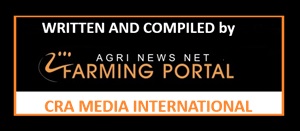South Africa is home to exceptional commercial farmers who have honed their craft through years of practical experience and proven success. These seasoned farmers possess invaluable knowledge that can guide the next generation, ensuring the sustainability and growth of the agricultural sector. While technology offers significant advantages, it is not infallible, and true success in farming often hinges on the wisdom gained from decades in the field.
The upcoming generation of farmers must be mentored by these veterans to grasp the real-world challenges and nuances of agriculture. Beyond the allure of modern tools, young farmers need to learn the hands-on skills, resilience, and adaptability that only experience can provide.
This transfer of knowledge is crucial for building a robust agricultural foundation.Moreover, achieving food security is a national priority. By bridging the gap between experienced farmers and newcomers, South Africa can cultivate a skilled workforce capable of meeting domestic food demands and contributing to economic stability. Encouraging mentorship programs and practical training will empower young farmers to thrive, ensuring that the country’s agricultural legacy endures and strengthens.
 VIEWPOINT- South African Cattle Farmers Navigate a Promising Yet Tough 2025
VIEWPOINT- South African Cattle Farmers Navigate a Promising Yet Tough 2025
South Africa’s agricultural future rests on the shoulders of its young, upcoming farmers, a group with the potential to transform the sector amid evolving challenges. The need to support and empower this generation is more pressing than ever, given the country’s reliance on a robust agricultural base for food security and economic stability.These young farmers bring fresh perspectives and a willingness to embrace technology, from precision farming tools to sustainable practices. However, success in agriculture demands more than innovation—it requires practical experience and resilience, qualities honed by South Africa’s seasoned commercial farmers.
Many of these veterans, with decades of proven success, are eager to mentor the next generation, offering insights into navigating unpredictable weather, market fluctuations, and resource management.Despite their potential, young farmers face significant hurdles, including limited access to land, finance, and training. Government initiatives and private partnerships must prioritize mentorship programs, affordable land leases, and financial support to bridge these gaps.
The recent recovery in agricultural employment, with a 4% quarterly rise to 935,000 jobs in Q3 2024, highlights the sector’s capacity to absorb new talent, particularly in subsectors like horticulture and livestock.Food security remains a critical goal, and empowering young farmers is key to achieving it. By blending their tech-savvy approach with the wisdom of experienced farmers, South Africa can cultivate a resilient agricultural workforce. Investments in education, infrastructure, and security against rising rural crime will further enable these young agriculturists to thrive, securing a sustainable and prosperous future for the nation’s farming community.

DISCLAIMER
The views and opinions expressed in this program are those of the writers and do not necessarily reflect the views or positions of any entities they represent. The information contained in this website is for general information purposes only. The information is provided by CRA and while we endeavour to keep the information up to date and correct, we make no representations or warranties of any kind, express or implied, about the completeness, accuracy, reliability, suitability or availability with respect to the website or the information, products, services, or related graphics contained on the website for any purpose. Any reliance you place on such information is therefore strictly at your own risk.
















